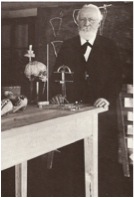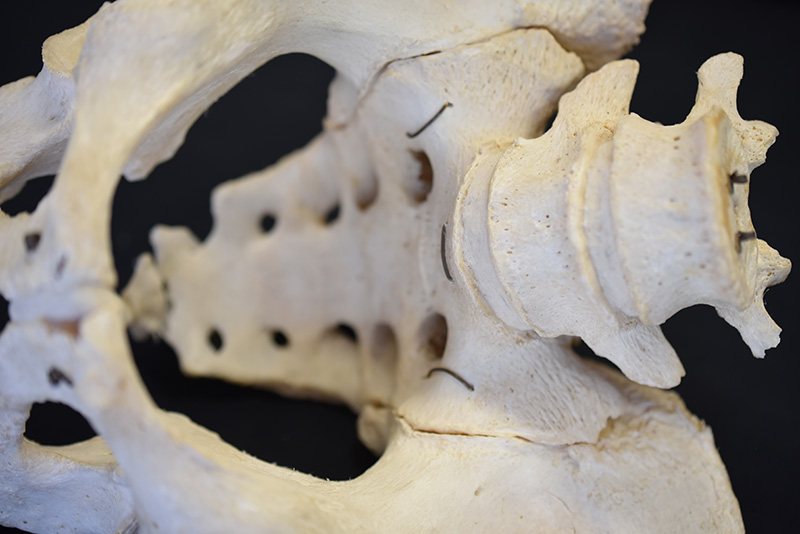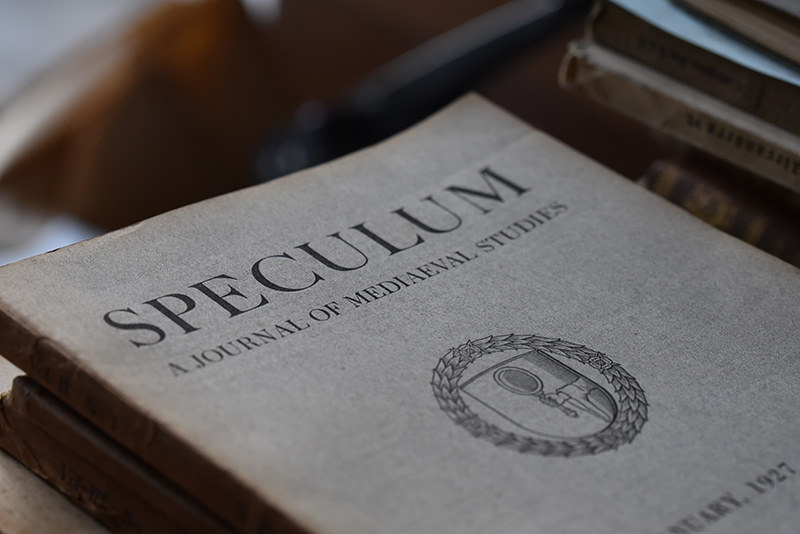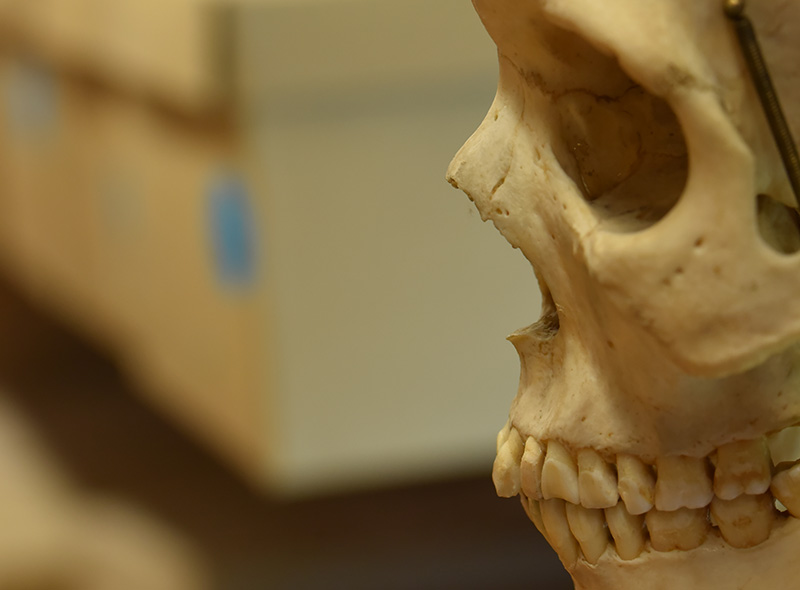History

The history of the Munich State Anthropological Collection begins with Johannes Ranke (*1836, †1916). In 1886, he was appointed to the first chair of “Anthropology and Prehistory” in Germany at the University of Munich.
The foundation for today’s State Collection of Anthropology Munich, however, had already been laid in 1825. With the accession to power of King Ludwig I, anthropological studies received state funding. After the founding of numerous historical societies, a Munich Society for Anthropology, Ethnology and Prehistory had also been established in 1870.
In the spring of 1885, Ranke organized a privately financed exhibition of prehistoric and early historic finds from Bavaria. The exhibition was based on his own collection of replicas of prehistoric objects and original finds. Loans from state museums, various historical and anthropological societies and some private collectors completed the exhibition. A few days before its opening, Ranke asked the Ministry of Church and School Affairs if he could donate his collection to the state and if it could be attached to the Paleontological Museum as a separate department under the direction of Professor Karl A. von Zittel. For himself as the head of this museum department, Ranke claimed only the assurance of the installation of his objects in three rooms as well as an office along with work space. Zittel officially took over Ranke’s collection on October 14, 1885.
In 1888, after less than three years of affiliation with the Palaeontological Museum, Ranke applied to the Ministry for the separation of his department, which led to the creation of an independent “Conservatory of the State Prehistoric Collection” in February 1889. In May 1889, the new State Collection was opened, housed in four rooms of the Old Academy in Neuhauserstrasse. In the first years of independence, Ranke attempted to acquire more anthropological material – mostly from donations from private collections. In 1897, an assistant position was established, and from 1902 on, in response to Ranke’s efforts, the institution was named “Anthropological-Prehistorical Collection of the State”. Its management was then linked by personal union to the Chair of Anthropology.
The anthropological objects were placed apart from the prehistoric ones in a separate room of the Old Academy and were publicly displayed from 1912.
Ranke remained in office until his death in 1916. His successor was Rudolf Martin (*1864, †1925). In turn, Theodor Mollison (*1874, †1952) followed in his footsteps from 1926 to 1944. In 1927, Mollison achieved the separation of the two collection departments. Under his care, a contemporary anthropological display collection was also established.
Ranke’s student Ferdinand Birkner, who had been assistant from 1897 and curator of the Prehistoric Department from 1908, headed the Prehistoric State Collection from 1927 to 1934, serving as director from 1930.
On the night of the bombing on April 25, 1944, everything that Ranke, Martin and Mollison had previously collected and that had not been taken out of storage as a precaution because of the war, was almost completely destroyed, as was much of the original documentation. Mollison kept what could be salvaged from the rubble in his private home, where he also met with the rest of his colleagues.
After four years in which the chair and directorate of the Anthropological Collection were orphaned, Karl Saller (b. 1902, †1969) took over both positions in 1948. In 1949, the Institute and the State Collection were housed in rooms of the half-destroyed School of Arts and Crafts in Richard-Wagner-Strasse 10.
After Saller’s death, Georg Glowatzki became head of the State Collection, initially on a provisional basis, and then in 1972 it was moved to the basement rooms in a building complex at Theresienstrasse 37-41. In 1973, Hartwig Cleve was appointed as Saller’s successor to the Chair of Anthropology and Human Genetics, and in 1974 the personal union in the management of the Institute and the Collection was discontinued. At the request of the General Directorate, the collection also received an additional position of conservator in 1975.
Collection building (from Barer Straße): In 1976, the Anthropological State Collection moved into its first own service building at Karolinenplatz 2a, where it is still today. The neoclassical building was erected in 1809 by Karl von Fischer as the stable building of Baron Asbeck’s palace. Over the years, the building has been remodeled several times and renovated in 2000.
Nevertheless, the premises cannot provide adequate space for all the finds from the Epipaleolithic to the early modern period. The collection holdings were distributed throughout the city of Munich in various storage rooms, for example, many finds were stored in the Theresienstraße and an old barracks in the south of Munich.
After Glowatzki’s departure, the Anthropological State Collection was first headed provisionally by Ernst Josef Fittkau from 1977 to 1980. He was followed by Peter Wellnhofer from 1981 to 1982 – also as provisional director – and then Gerfried Ziegelmayer (*1925, †2007) as director from 1983 to 1991. Since Ziegelmayer, a personal union was once again initiated, but in a modified form: The directorship of the Anthropological Collection is now linked to the professorship of anthropology at the Ludwig-Maximilians-Universität (LMU). As the first woman in the history of the Anthropological State Collection, Gisela Grupe was appointed director from 1991 to 2015.
In 2000, the Anthropological Collection merged with the Paleoanatomical Collection to form an interdisciplinary bioarchaeological institute, the Bavarian State Collection of Anthropology and Paleoanatomy Munich, or SAPM. With the publication of the first volume of the “Documenta Archaeobiologiae” (DOAB), the SAPM has had its own publication organ since 2003.
Since 2021, the anthropological department is once again independent in the SNSB network as the State Collection for Anthropology Munich (SAM).
From 2015 to 2021, Prof. Dr. Joris Peters was director of both departments of the SAPM.
Since 2021, he is now director of the SAM and SPM (State Collection for Palaeoanatomy Munich). Under his leadership, the consolidation of all magazines containing anthropological skeletal material took place in 2016. All SAM skeletal finds are now centrally stored in a single magazine located in Aschheim/Dornach in a 3000 m² building.
As an archive for anthropological skeletal research material and data from the past and present, and at the same time a research institute for anthropology, the SAM is the only institution of its kind in Germany.




